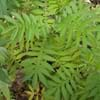Life Span
Perennial
Perennial
Type
Perennial
Flowering Plants, Shrubs
Origin
North America, Europe, Russia/Siberia, Asia, Japan
Hybrid origin
Types
Bigleaf hydrangea, Hortensia, Smooth hydrangea, Oakleaf hydrangea, Annabelle
Bigleaf hydrangea, Hortensia, Smooth hydrangea, Oakleaf hydrangea, Annabelle
Habitat
Forest edges, Hillside, Woods
Forest edges, Hillside, Woods
USDA Hardiness Zone
3-8
4-9
Habit
Clump-Forming
Clump-Forming
Minimum Height
25.40 cm
25.40 cm
Minimum Width
40.60 cm
30.50 cm
Flower Color
White, Yellow, Red, Orange, Pink, Rose, Silver
Yellow green, Pink, Rose, Violet, Plum
Flower Color Modifier
Bicolor
Bicolor
Fruit Color
Not Available
Not Available
Leaf Color in Spring
Green, Gray Green, Silver
Green, Light Green
Leaf Color in Summer
Green, Gray Green, Silver
Green
Leaf Color in Fall
Green, Gray Green, Silver
Green, Yellow green
Leaf Color in Winter
Light Green
Light Green
Leaf Shape
Oblovate
Oblovate
Plant Season
Summer, Fall
Spring, Summer
Sunlight
Full Sun, Partial Sun, Partial shade
Full Sun, Partial Sun
Type of Soil
Clay, Loam, Sand
Clay, Loam, Sand
The pH of Soil
Acidic, Neutral, Alkaline
Acidic, Neutral, Alkaline
Soil Drainage
Well drained
Average
Bloom Time
Early Summer, Summer, Late Summer, Early Fall
Early Spring, Spring, Late Spring, Early Summer, Summer
Tolerances
Drought
Pollution, Drought, Salt
Where to Plant?
Container, Ground
Container, Ground
How to Plant?
Seedlings, Stem Planting
Seedlings, Stem Planting
Plant Maintenance
Medium
Medium
Watering Requirements
Not Available
Not Available
In Summer
Average Water
Average Water
In Spring
Moderate
Moderate
In Winter
Average Water
Average Water
Soil pH
Acidic, Neutral, Alkaline
Acidic, Neutral, Alkaline
Soil Type
Clay, Loam, Sand
Clay, Loam, Sand
Soil Drainage Capacity
Well drained
Average
Sun Exposure
Full Sun, Partial Sun, Partial shade
Full Sun, Partial Sun
Pruning
Remove damaged leaves, Remove dead branches, Remove dead leaves
Remove damaged leaves, Remove dead branches, Remove dead leaves
Fertilizers
All-Purpose Liquid Fertilizer
All-Purpose Liquid Fertilizer
Pests and Diseases
Red blotch
Red blotch
Plant Tolerance
Drought
Pollution, Drought, Salt
Flower Petal Number
Single
Single
Foliage Texture
Fine
Medium
Foliage Sheen
Matte
Matte
Attracts
Bees, Flies
Hummingbirds
Allergy
Chest tightness, Diarrhea, Dizziness, Nausea, Vomiting
Chest tightness, Diarrhea, Dizziness, Nausea, Vomiting
Aesthetic Uses
Not Available
Not Available
Beauty Benefits
Not Available
Not Available
Edible Uses
Not Available
Not Available
Environmental Uses
Air purification
Air purification
Medicinal Uses
Fever, Kidney problems, Urinary tract problems
Fever, Kidney problems, Urinary tract problems
Part of Plant Used
Flowers, Root
Flowers, Root
Other Uses
Not Available
Not Available
Used As Indoor Plant
Not Available
Not Available
Used As Outdoor Plant
Yes
Yes
Garden Design
Bedding Plant, Cutflower, Feature Plant, Groundcover, Mixed Border, Wildflower
Container, Foundation, Mixed Border
Botanical Name
ACHILLEA tomentosa
HEMEROCALLIS 'Rosy Returns'
Common Name
Wooly Yarrow
Daylily, Rosy Returns Daylily
In Hindi
Hydrangea
Hydrangea
In German
Hortensie
Hortensie
In French
Hortensia
Hortensia
In Spanish
Hortensia
Hortensia
In Greek
υδραγεία
υδραγεία
In Portuguese
Hortênsia
Hortênsia
In Polish
Hortensja
Hortensja
In Latin
Hibiscus
Hibiscus
Phylum
Not Available
Not Available
Class
Not Available
Not Available
Order
Not Available
Not Available
Family
Asteraceae
Liliaceae
Genus
Not Available
Not Available
Clade
Not Available
Not Available
Tribe
Not Available
Not Available
Subfamily
Not Available
Not Available
Number of Species
Not Available
Not Available
Importance of Wooly Yarrow and Rosy Returns Daylily
Want to have the most appropriate plant for your garden? You might want to know the importance of Wooly Yarrow and Rosy Returns Daylily. Basically, these two plants vary in many aspects. Compare Wooly Yarrow and Rosy Returns Daylily as they differ in many characteristics such as their life, care, benefits, facts, etc. Every gardener must at least have the slightest clue about the plants he wants to plant in his garden. Compare their benefits, which differ in many ways like facts and uses. The medicinal use of Wooly Yarrow is Fever, Kidney problems and Urinary tract problems whereas of Rosy Returns Daylily is Fever, Kidney problems and Urinary tract problems. Wooly Yarrow has beauty benefits as follows: Not Available while Rosy Returns Daylily has beauty benefits as follows: Not Available.
Compare Facts of Wooly Yarrow vs Rosy Returns Daylily
How to choose the best garden plant for your garden depending upon its facts? Here garden plant comparison will help you to solve this query. Compare the facts of Wooly Yarrow vs Rosy Returns Daylily and know which one to choose. As garden plants have benefits and other uses, allergy is also a major drawback of plants for some people. Allergic reactions of Wooly Yarrow are Chest tightness, Diarrhea, Dizziness, Nausea and Vomiting whereas of Rosy Returns Daylily have Chest tightness, Diarrhea, Dizziness, Nausea and Vomiting respectively. Having a fruit bearing plant in your garden can be a plus point of your garden. Wooly Yarrow has no showy fruits and Rosy Returns Daylily has no showy fruits. Also Wooly Yarrow is not flowering and Rosy Returns Daylily is not flowering . You can compare Wooly Yarrow and Rosy Returns Daylily facts and facts of other plants too.


